Although major summer festivals known to draw large crowds have been cancelled, smaller events are still on! At this point, having in place coronavirus prevention measures in place at events is pretty much a given. For details on what measures are being implemented where, please see the official event/venue websites or contact the organizers directly.
1. Hydrangeas at Shifukuji Temple
資福寺のアジサイ
Through early July
Central Sendai

Photo by Yuan Wang
This quaint temple in Sendai's Kitayama neighborhood is typically a quiet, seldom visited spot. Come the end of June, in-the-know locals flock here to enjoy the large hydrangea bushes in bloom. Particularly at this time of year, the temple grounds at are said to look like "heaven's doorstep."
Time: Always open
Admission: Free
Details (English): visitmiyagi.com
Location: Shifukuji Temple (資福寺). Map here.
Access by rail: 15-minute walk from Kita-Sendai Station.
Access by bus: 5-minute walk from Kitayama Ichichome (北山一丁目) bus stop. Timetable here.
2. Fireflies at Masubuchi
鱒渕川のゲンジボタル
Through early July
Tome, Miyagi
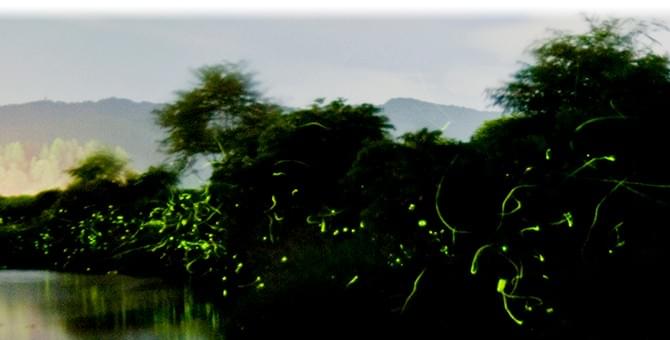
A 1.5-kilometer stretch of river home to one of the most impressive firefly habitats in Japan. So impressive, in fact, that the area has been designated a National Natural Monument! Masubuchi is known for its Genji fireflies, a large firefly species found only in Japan.
Hours: Always open, but best firefly viewing is 8–9 p.m.
Closed days: None
Admission: Free
Details: miyagi-yonekawa.com/pickup
Location: Along the Masubuchi River (鱒渕川) between the Genji Firefly Koryukan (源氏ボタル交流館) to Masubuichi Kani Post Office (鱒渕簡易郵便局). Map here.
3. Ubugasawa River Firefly Park
産ヶ沢川ホタル自然公園
Late June–early July
Koori, Fukushima
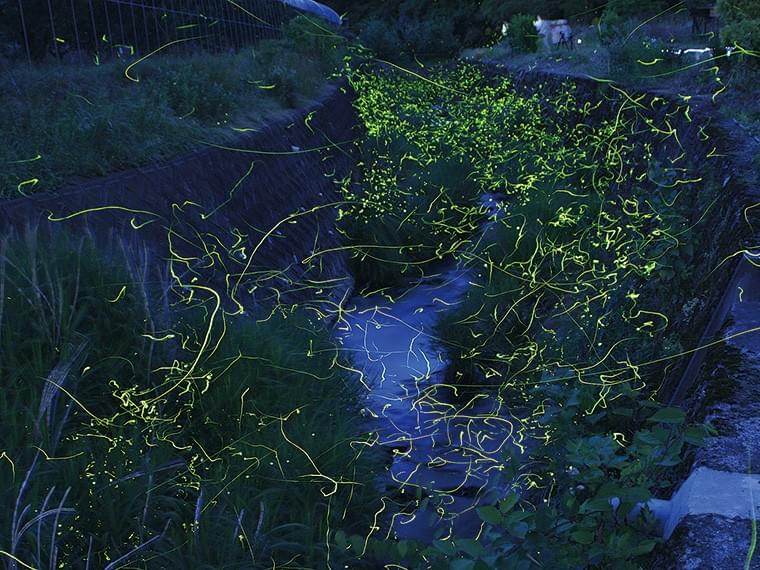
A good place to see Genji fireflies in large numbers, and one of the few habitats easily accessible by public transportation. Genji fireflies are a species of large firefly, found only in Japan. At the peak of the 2019 firefly season, the Ubugasawa population was around 4,000 strong.
4. Yakurai Garden Rose & Herb Fair
やくらいガーデンローズ&ハーブフェア
Through July 10
Kami, Miyagi
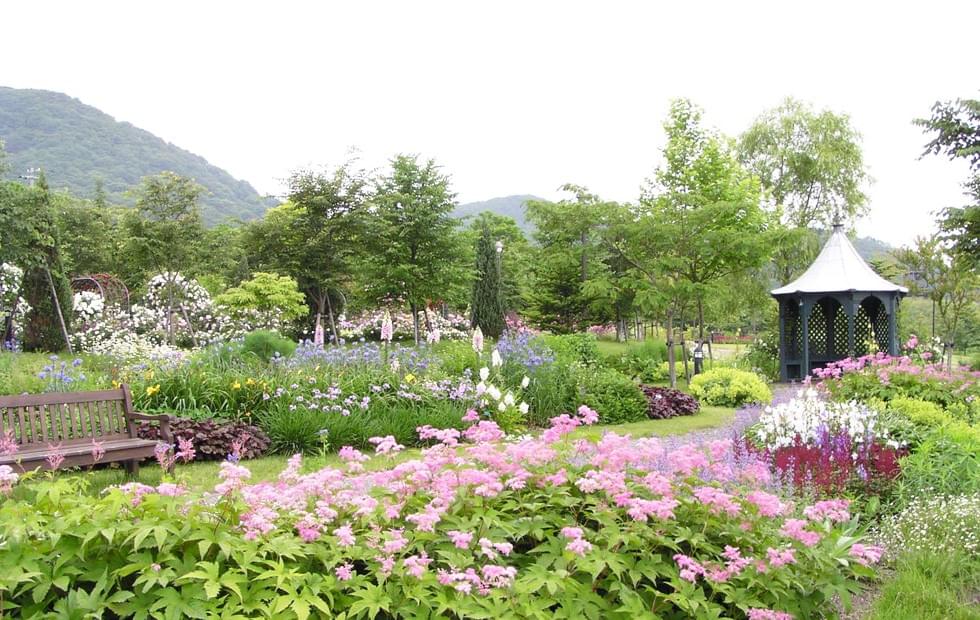
Yakurai Garden is one of the most photogenic gardens in Tohoku, with an atmosphere that changes not only by the season, but by the month! The garden is best known for its immaculate rainbow-like fields of colorful flowers planted in deliberate patterns, which bloom in spring and autumn. In summer, the garden takes on a more natural look, with bigger, wilder flowers and lush green. Come July, rose season is just winding down, and the herb garden is reaching its peak—think aromatic and colorful lavender, mints, and more.
If you're a fan of gardens and flowers, it might be worth buying a yearly passport. The passport costs ¥2,000 which allows free entry to the garden all year.
Hours: 10:00–17:00
Closed days: None during fair
Admission: Adults ¥700, children ages junior high & younger ¥200
Event details: miyagi-kankou.or.jp
Yakurai Garden official HP: yakurai-garden.com
Location: Yakurai Garden (やくらいガーデン). Map here.
5. Osaki Hachimangu Chinowa
大崎八幡宮の茅の輪
Through mid-July
Central Sendai
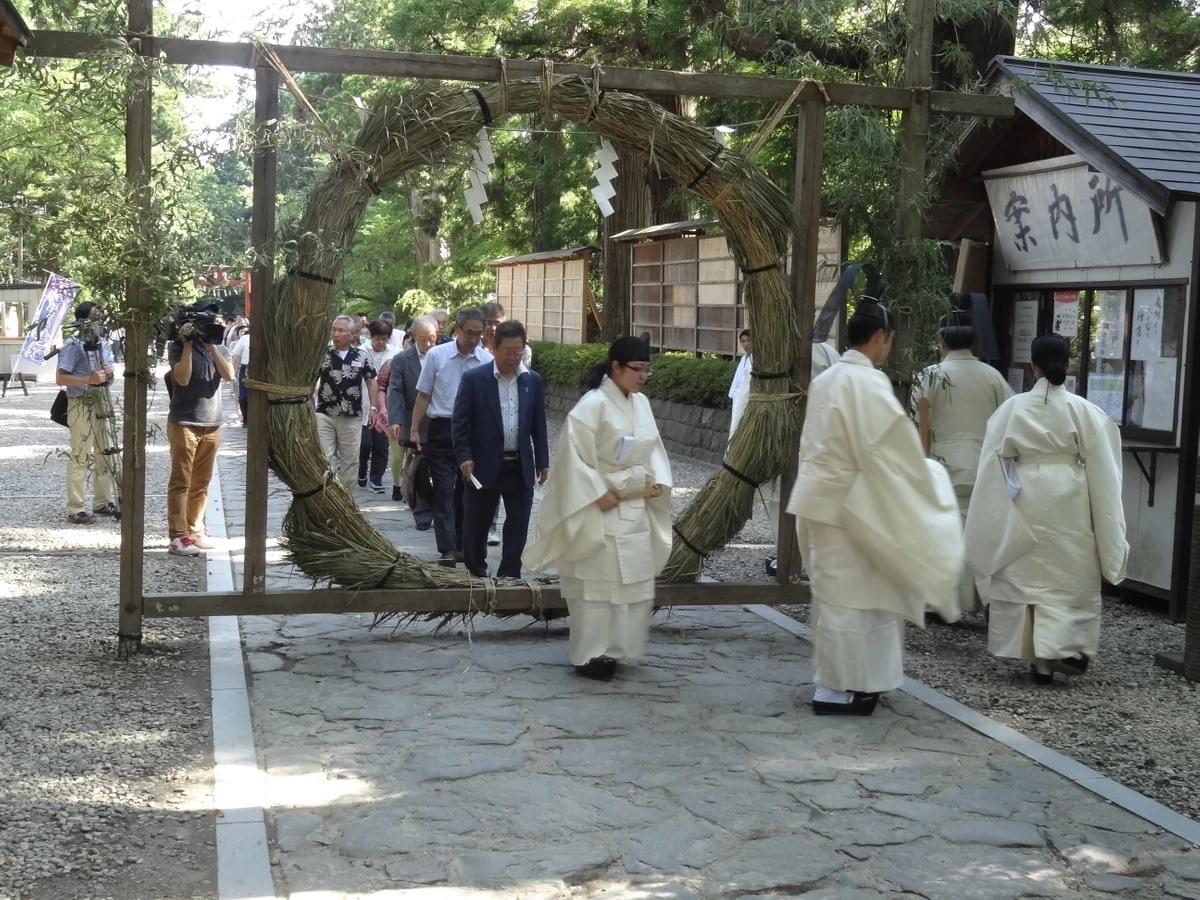
Osaki Hachimangu Shrine holds an oharae-shiki purification ceremony every year on June 30. Unfortunately, due to concern over coronavirus, the ceremony was not be open to the public this year. As a consolation, the shrine has put together a short video of this year's private ceremony and has shared it on YouTube.
The shrine has set up their oharae-shiki chinowa as in regular years though, and invites the public to come perform the chinowa-kuguri ritual freely on their own anytime while the chinowa is up. What's a chinowa and chinowa-kuguri? A chinowa (茅の輪) is a large ring made of bundled aquatic plants. In chinowa-kuguri, worshippers pass through the chinowa in a left-to-right figure-eight pattern, a simple ritual said to purify the spirit completely of all the unintentional corruption accumulated over the past six months.
Hours: 9:00–17:00
Admission: Free
Shrine details (English): osakihachimangu.com
Location: Osaki Hachimangu Shrine (大崎八幡宮). Map here.
Access by rail: A 15-minute walk from Kunimi or Tohoku Fukushi Daigaku-mae Stations
Access by Loople Sendai Bus: 43 minutes from Sendai Station. Board Loople Sendai Bus at Sendai Station West Exit Bus Pool platform 16. Alight at Loople bus stop #12, Osaki Hachimangu Shrine. Bus details and timetable here (English).
6. Hydrangeas at Korinji Temple
高林寺のアジサイ
Through mid-July
Nihonmatsu, Fukushima
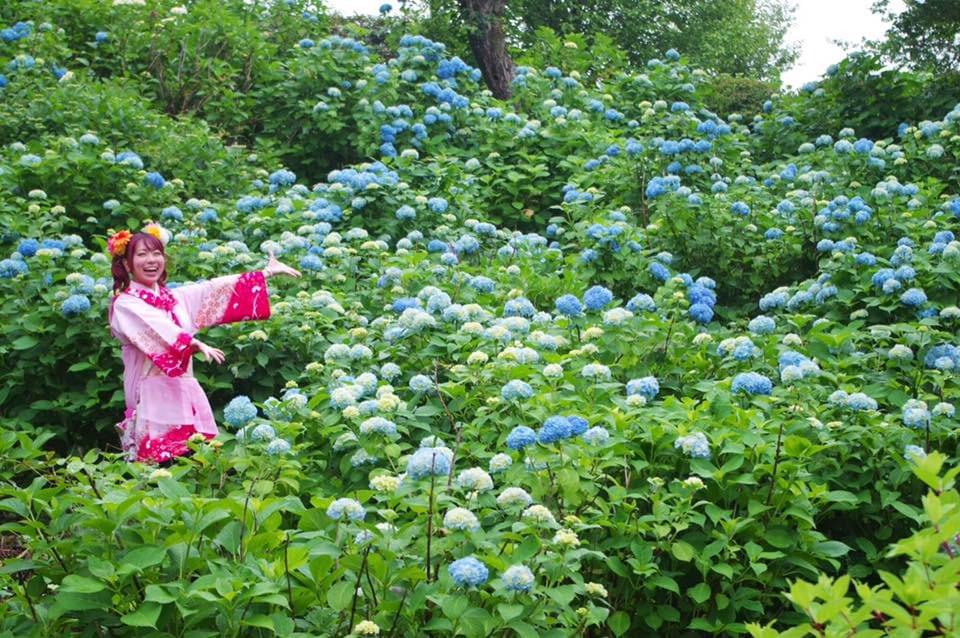
Though officially named Korinji, this temple is known as Ajisai-dera (lit. "Hydrangea Temple") by locals thanks to its hydrangea-filled grounds. Though the temple isn't well-known outside of the local area, it's been recommended to us by a local garden enthusiast as one of the best places to see hydrangea in all of Japan!
Hours: Always open
Closed days: None
Admission: Free
Details: nihonmatsu-kanko.jp
Location: Gohozan Korinji (護法山 高林寺). Map here.
Access: 28 minutes from Nihonmatsu Station by bus, followed by a 15-minute walk. At the Nihonmatsu Station Iriguchi (二本松駅入口) bus stop, board bus bound for Towa Shogakko (東和小学校). Alight at Ota Wakamiya (太田若宮) bus stop.
7. Sendai Stone-Age Heritage Meguri
仙台の遺産めぐり
Through July 19
Central Sendai

The Tomizawa Site Museum may be Sendai's best-known prehistoric heritage site, but did you know there are others? Where are they? What artifacts have been discovered? This exhibit will answer those questions! In addition to this and the museum's incredible permanent exhibit (the Tomizawa Site itself), the museum also features an ambitious outdoor exhibit: a recreation of an Ice Age forest. For updates about wildlife and flower status in the outdoor exhibition area, follow the museum's official Facebook Page.
Hours: 9:00–14:45 (last entry 16:15)
Admission: ¥460 adults, ¥230 high school students, ¥110 junior high & elementary school students
Languages: Permanent exhibits have signage in English, Korean, & Chinese
Event details: sendai-c.ed.jp
Museum official website (English): sendai-c.ed.jp
Location: Sendai City Tomizawa Site Museum (地底の森ミュージアム). Map here.
Access: 5-minute walk from Nagamachiminami Station
8. Michinoku Ajisai Park
みちのくあじさい園
Through July 26
Ichinoseki, Iwate
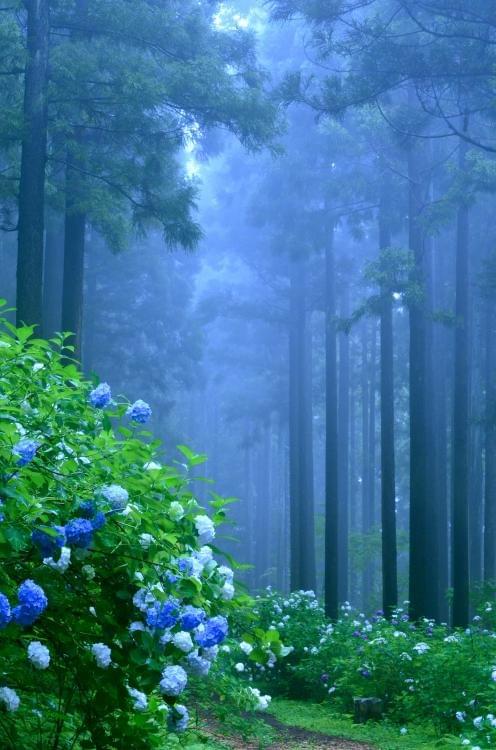
The Michinoku Hydrangea Garden is one of Japan's Japan's biggest and best, with the garden forming the underbrush of a cedar forest. A two-kilometer long walking trail winds through the forest, along which visitors can see around 30,000 hydrangea in about 300 different varieties.
Hours: 9:00–17:00 (last entry 16:30)
Admission: Adults ¥1,000, children ages elementary through junior high ¥200, children ages kindergarten & younger free
Details: ichitabi.jp
Location: Michinoku Hydrangea Garden (みちのくあじさい園). Map here.
Access: About 30 minutes by bus from Ichinoseki Station, followed by a 15-minute walk.
From the Bus Stop 7 in front of Ichinoseki Station (一関駅), board a Geibikei Line (げいび渓線) bus bound for Geibikei (げいび渓) or Surisawa Ekimae (摺沢駅前). Alight at Mizukami (水上). Timetable here.
9. Ichihasama Lily Garden
一迫ゆり園
Through July 27
Kurihara, Miyagi

The Ichihasama Lily Garden's wooded surroundings make its colorful, imaginative landscaping appear almost fairytale-like. This is the time of year when the garden is at its best, with lilies in full bloom.
Hours: 8:30–17:00
Closed days: None during lily season
Admission: Adults ¥670, children ages elementary to high school ¥310
Location: Minami-Kurikoma Kogen Ichihasama Lily Garden (南くりこま高原一迫ゆり園). Map here.
Access: 70 minutes by bus from Sendai Station, followed by a 15-minute walk. From Bus Stop 32, board bus highway bus bound for Ichihasama Sogo Shisho-mae (一迫総合支所前). Alight at Ishihasama Sogo Shisho-mae. Timetable here.
10. Abukuma River Noryo Fune cruises
阿武隈ライン船下り「納涼船」
Fridays & Saturdays through August 3
Marumori, Miyagi
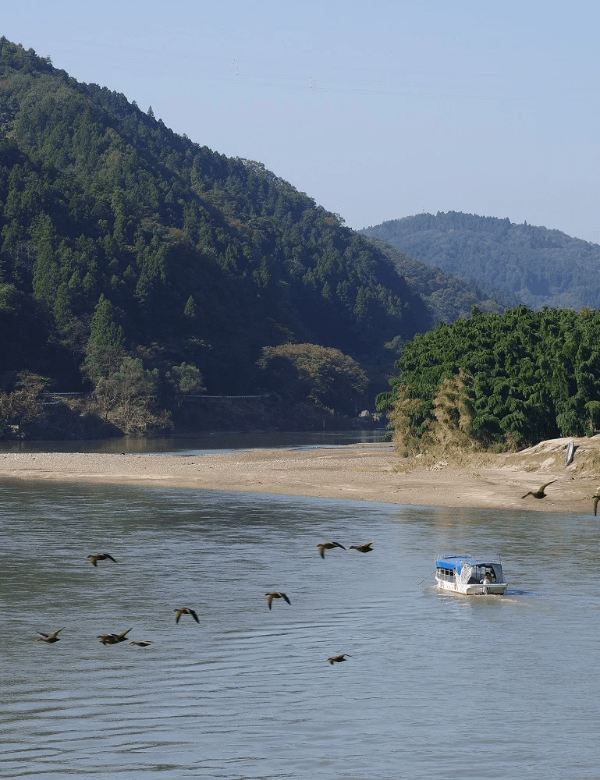
An Abukuma riverboat cruise is a relaxing boat ride down a calm, scenic section of river in southern Miyagi. In July, a special noryo (lit. "enjoying the cool of the evening") cruise is offered. This hour-long cruise includes beer and otsumami appetizers for adults (or juice and sweets for kids), a lottery raffle game, and a trivia game with prizes. Reservations are required for the noryo fune cruise, but none are needed for the regular daytime cruises.
Time (Noryo Fune): Departs at 16:00
Hours (regular cruises): Departures at regular intervals 8:30–17:00
Fee (Noryo Fune): ¥2,000 adults, ¥1,200 children
Fee (regular cruises): ¥1,600 adults, ¥800 children, children kindergarten & younger free
Reservations: Required for Noryo Fune, but none needed for regular cruises
Noryo Fune details: marumori.jp
Details (English): visitmiyagi.com
Location: Abukuma Line Boat Pier (阿武隈ライン舟下り乗船場). Map here.
Access: 2 kilometers from Marumori Station, on foot or by free rental cycle
11. Baikamo in Shiroishi
白石の梅花藻
Through late July
Shiroishi, Miyagi

Baikamo (梅花藻), sometimes called "water buttercup" in English, is delicate aquatic flower native to Japan, which grows only in limpid streams with a water temperature below 15 degrees Celsius. One such place is the canal in front of the Shiroishi Bukeyashiki (Samurai Residence). Between these rare flowers and this real bukeyashiki, the summer atmosphere here is nearly the same as it was in the days of the samurai.
Hours: Always open (canal), 9:00–17:00* April–October (samurai residence)
*Last entry is 30 minutes prior to closing
Closed days: None during baikamo season
Admisson (canal): Free
Admission (samurai residence): ¥200 adults, ¥100 children ages elementary to high school, children ages kindergarten & younger free
Bukeyashiki details (English): visitmiyagi.com. For baikamo updates, see the @shroishijo.shiroishi Facebook Page.
Location: The canal in front of the Shiroishi Bukeyashiki (武家屋敷). Map here.
Access: 15-minute walk from Shiroishi Station
12. Blueberry picking at Zao Blueberry Farm
蔵王ブルーベリーファームでブルーベリー狩り
Through mid-August
Zao-machi, Miyagi

July is peak blueberry season in Miyagi, and the best way to enjoy them at their freshest and ripest is to pluck them straight off the bush yourself! There are a number of blueberry farms throughout Miyagi which offer blueberry picking, but most require advance reservations. The Zao Blueberry Farm doesn't require reservations, making it a great spot for a spontaneous day trip. In addition, the farm grows over 60 varieties of blueberries to choose from. Blueberry-picking experiences here are all-you-can-eat style: spend 45 minutes in the field picking and eating as many blueberries as you like. The picking experiences themselves don't allow participants to take home any berries, but freshly picked to-go berries are for sale at the farm's rest house.
Hours: 9:00–16:00
Admission: Free (45-minute all-you-can-eat blueberry picking session is ¥1,000 adults, ¥700 children.)
Official website: zao-blueberry.jp. For blueberry status updates, see the farm's Facebook Page.
Location: Zao Blueberry Farm (蔵王ブルーベリーファーム). Map here.
13. Around the World: See Ships of the World Through Model Sailboats
帆船模型から見る世界の船~Around the World~
Through August 31 (Free admission July 23)
Ishinomaki, Miyagi
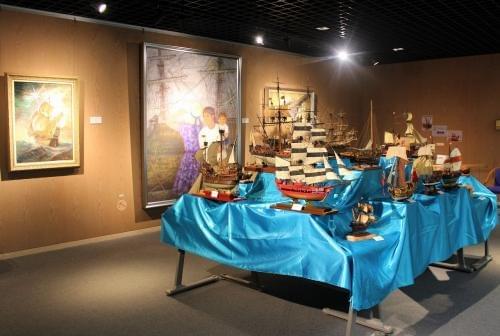
An exhibition of model ships, part of the museum's permanent collection but seldom on display. These precision-built models span a range of countries and time periods, helping visitors get a feel for the diversity of sailing vessels and how their construction evolved over time. Bonus: In honor of Marine Day, admission to the museum is free on July 23!
Hours: 9:30–16:30 (last entry 16:00)
Closed days: Tuesdays (except public holidays)
Admission: ¥350 adults, children ages high school & younger free. Admission is free for everyone on Marine Day (July 23)
Details: santjuan.or.jp/news
Location: Miyagi San Juan Bautista Museum (サン・ファン館). Map here.
Access: 25-minute walk from Watanoha Station
14. Tomiya Blueberry Sweets Fair
とみやブルーベリースイーツフェア
July 4–19
Tomiya, Miyagi

Tomiya blueberries have recently begun garnering international praise, so much so that Tomiya blueberry juice was even served at the 2016 G7 Summit in Ise! During blueberry season, local sweets shops break out their best seasonal dessert recipes. No reservations are needed—simply drop by any of the participating sweets shops and have whatever you like. Blueberry-picking experiences are also available in town—see link for details.
Hours: Varies by shop, all are open sometime between 8:30–20:00. See Details link for hours by shop.
Closed days: Varies by shop, see link for details.
Location: Throughout Tomiya City
Access: By bus from Izumi-Chuo Station
15. Emi Ichinoseki Exhibition: Marche aux fleurs
一関恵美 墨画展 Marche aux fleurs
July 4–August 30
Iwanuma, Miyagi
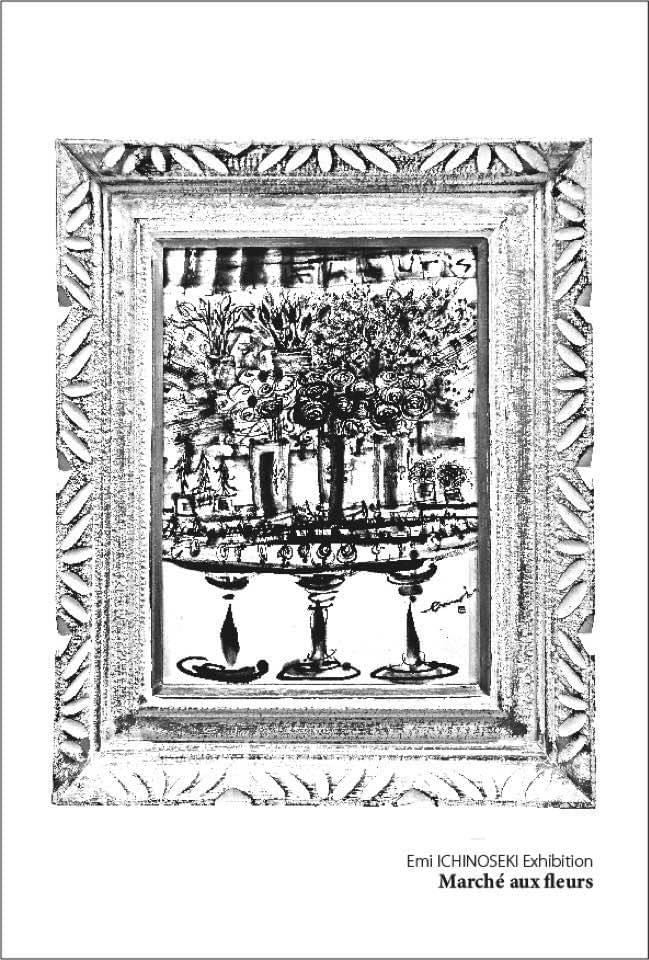
Emi Ichinoseki is a Miyagi-based sumi-e painter. You may have seen her work on display at the Sugimura Jun Museum of Art, or on bottles of sake by local brewers Urakasumi and Ichinokura, who commission her to design labels. Her homepage is English friendly, so check it out if you want to learn more about her work!
Marche aux fleurs is a small solo exhibition of Ichinoseki's work being held at Epic View, a cafe-gallery located just south of Sendai. The cafe roasts their own coffee beans, so you can enjoy fine art and fine coffee at the same time.
Hours: Tues–Sat 10:00–16:30 & 17:30–20:30, Sun 10:00–15:00
Closed days: Mondays
Admission: Free
Exhibition details: epicview.net
Emi Ichinoseki official HP: sumi-emi.com
Location: Art・Coffee Salon Epic View (Art・珈琲Salon Epic View). Map here.
Access: 8-minute walk from Iwanuma Station
16. Giga・Manga: From Edo Giga to Modern Manga
GIGA・MANGA 江戸戯画から近代漫画へ
July 4–September 6
Tagajo, Miyagi
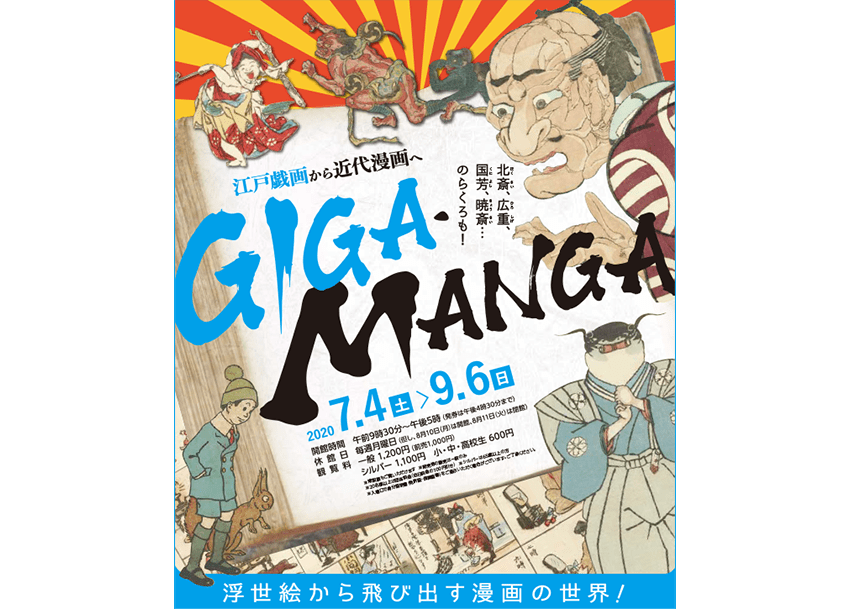
Any museum exhibition with a name this witty is a winner in our book! Giga (戯画) are satirical caricatures, an art form that originated in the Heian era and that gained mass popularity during the Edo period. Giga was pop culture of the Edo period, like manga is today. This exhibition looks at how these popular graphic arts evolved over time, and explores the influence of giga on modern day manga.
Hours: 9:30–17:00 (last entry 16:30)
Closed days: Mondays
Admisson: ¥1,200 adults, ¥1,100 seniors, ¥600 children ages elementary to high school
Exhibition details: thm.pref.miyagi.jp/exhibition
Museum details (English): visitmiyagi.com
Location: Tohoku History Museum (東北歴史博物館). Map here.
Access: At Kofuku-Tagajo Station
17. Star Party in Minamisanriku
スターパーティーin南三陸
July 7
Minamisanriku, Miyagi
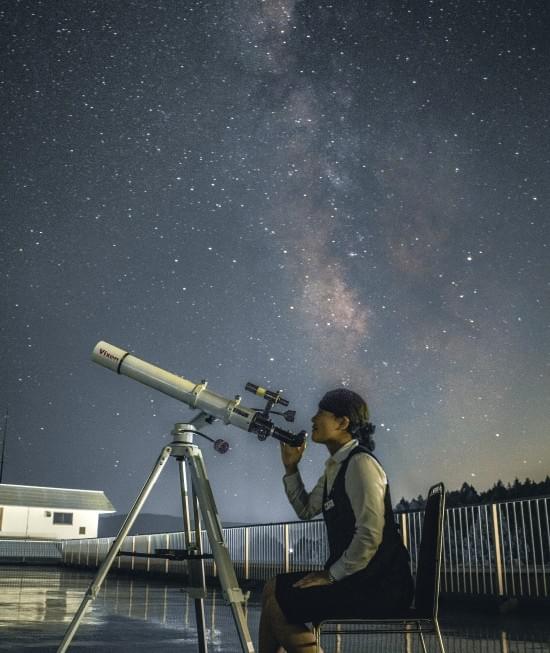
Come stargazing on the roof of Minamisanriku Hotel Kanyo, a seaside hotel with stunning open-air onsen baths. The hotel is located on the tranquil and scenic Shizugawa Bay, a Ramsar wetland with little light pollution. The starts will look lovely to the naked eye, but the hotel will also have a telescope set up for closer viewing. This event is open to everyone, not just overnight guests. To see what one of their past Star Parties was like, check out their blog entry here.
The hotel's epic seaside baths are open to day-trippers during the daytime, so if you've got the afternoon off, consider stopping by earlier in the day for a soak, then enjoy some of the local attractions (Sun Sun Shopping Village, Cape Kamiwarizaki, etc.) until the stargazing begins.
Hours: 20:00–21:30
Admission: Free
Official event page: ☆スターパーティー in 南三陸☆
Location: Minamisanriku Hotel Kanyo (南三陸ホテル観洋). Map here.
Access: 27-minute walk from Rikuzen-Togura Station
18. Shimin Yukata Day
市民のゆかたデー
July 7
Kaminoyama, Yamagata
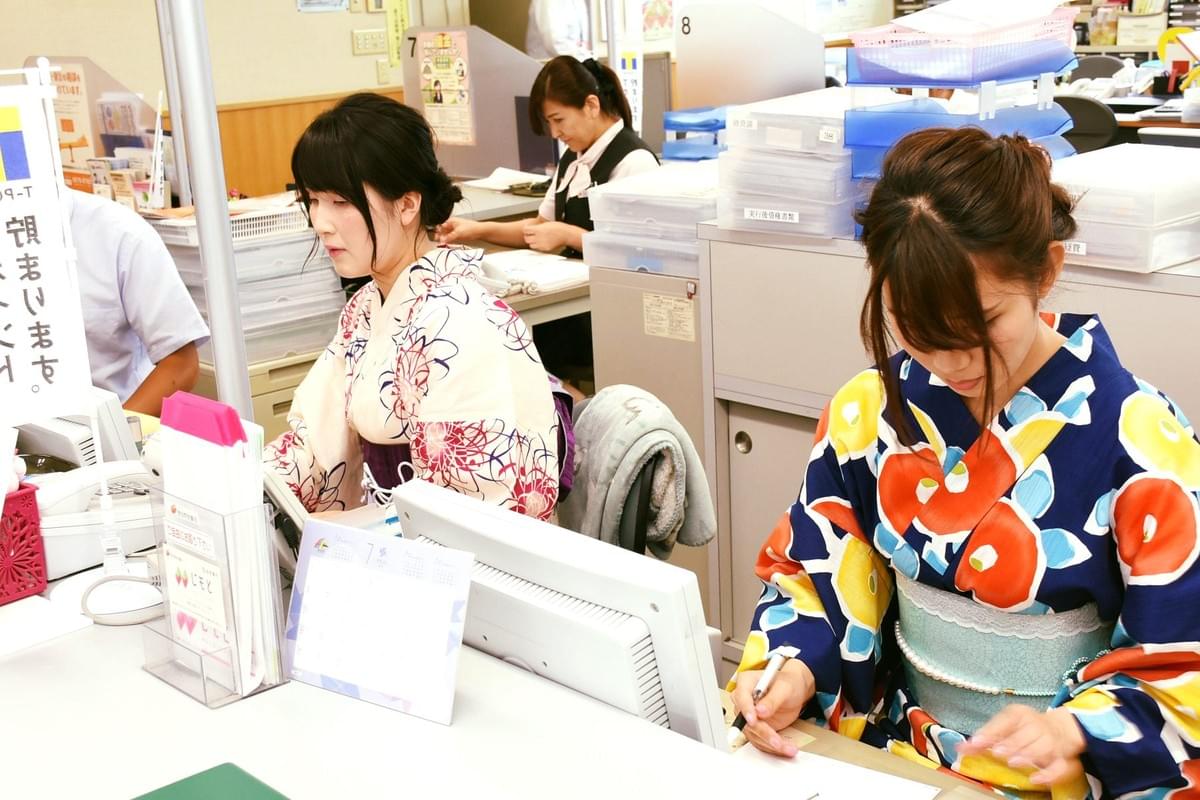
Brighten your mood this month by heading to Kaminoyama for their annual Yukata Day. The whole city gets involved in this event, with workers across the city donning yukata kimono to perform their daily tasks. Enjoy the novelty of yukata-clad cashiers, office clerks, and others.
In addition to seeing the locals dressed up in yukata, visitors are encouraged to flaunt one too! Shops across the city will be offering discounts and free gifts to customers who come wearing yukata on this day. Discounts and gifts include free tea, wagashi sweets, and discounts at longstanding shops like Dango Honpo Takahashi.
Hours: Throughout regular business hours of participating shops and facilities
Admission: Free
Location: Various shops and facilities throughout Kaminoyama City.
Access: On foot or by bus from Kaminoyama Onsen Station
19. Tono Washi Papermaking Workshop
遠野和紙作り体験
July 11
Iwaki, Fukushima
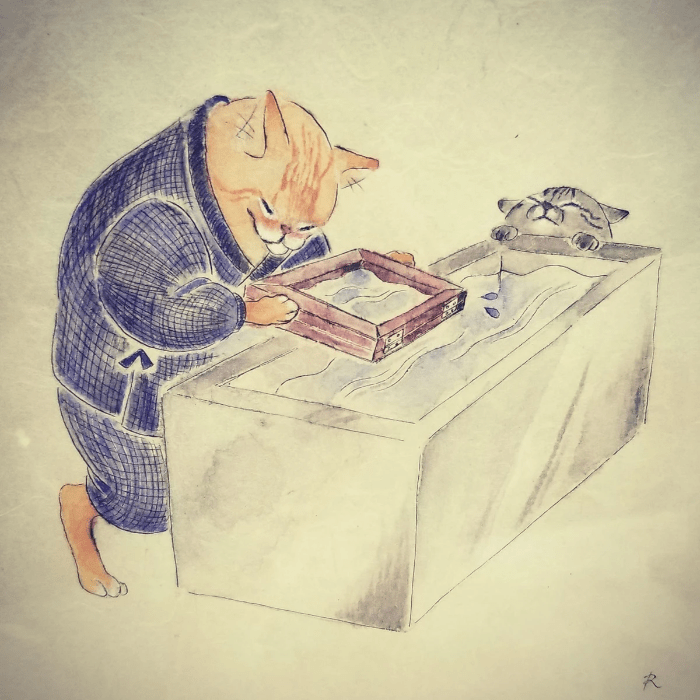
The art of traditional washi papermaking lives on as a well-appreciated but increasingly rare skill. Come learn how it's done at this hands-on workshop! One of the Tono Washi craftsmen is a native English speaker; she'll be at the workshop, so you'll be able to understand everything that's going on no problem.
Though the Tono Washi atelier itself is located deep in the countryside, this workshop is being held at a much more convenient location: the Museum of Folklore and Traditional Housing in central Iwaki. The plants used in traditional papermaking are grown in small quantities here, so in addition to trying your hand at papermaking, you can see the plants washi is made from in real life. The museum itself is worth a visit as well—a collection of real historical houses collected and arranged into a sort of village. Visitors are invited to enter and explore them all! The museum is English-friendly as well; ask for a copy of their very thorough English pamphlet at the information desk.
Hours: 13:00–15:00
Languages: English
Workshop fee: Free
Museum admission: ¥340 adults, ¥220 high school & college students, ¥170 children ages elementary to junior high
Reservations: Required for workshop. Can be made in English by emailing toonowashi101@yahoo.co.jp.
Event details (English): Tohno Washi Facebook Page
Official museum website: denshogo.jp
Location: Iwaki City Museum of Folklore and Traditional Housing (いわき市暮らしの伝承郷). Map here.
Access: By bus from Iwaki Station. At Iwaki Ekimae (いわき駅前) Bus Stop #6, board bus bound for Iwaki New Town (いわきニュータウン) or La Park Iwaki (ラパークいわき). On buses bound for Iwaki New Town, alight at Chuodai Kashima (中央台鹿島) bus stop. On buses bound for La Park Iwaki, alight at Kurashi no Denshogo Iriguchi (暮らしの伝承郷入口) bus stop. The timetables available online only show the major stops along each route, so to find bus times it's best to use the bus company's search feature instead (see here).
20. Yamagata Benibana Festival
山形紅花まつり
July 11–12
Yamagata City, Yamagata
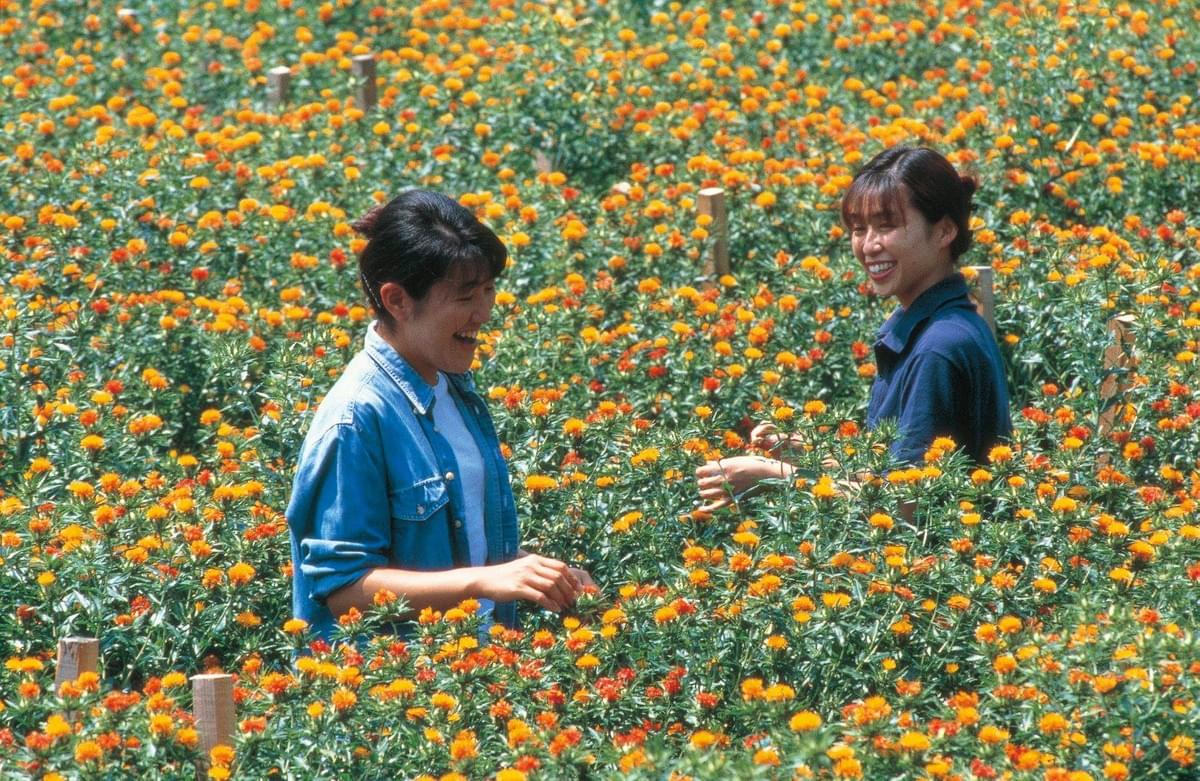
Benibana, known to English speakers as safflower, was once an important and expensive commodity in Japan. Kyoto geisha once painted their lips with it, and nobles would wear kimono dyed with benibana. Yamagata flourished as one of the main cultivation areas for the flower. Though the economical importance of the benibana trade has faded, the flower is still grown here and its uses are celebrated annually at local festivals.
Due to concern over coronavirus, the events of the 2020 festival have been reduced from that of regular years. Visitors are welcome to come visit the benibana fields and take pictures as usual, but the cosplay experiences and crafting workshops will not be offered this year. You can check the status of the flowers here.
Hours: Always open
Admission: Free
Official festival HP: yamagata-community.jp
Location: Benibana fields around the Takase Benibana Fureai Center (高瀬紅花ふれあいセンター). Map here.
21. A Jewel Box from Europe: Treasures from the collection of the Prince of Liechtenstein
ヨーロッパの宝石箱 リヒテンシュタイン侯爵家の至宝展
July 14–September 6
Central Sendai
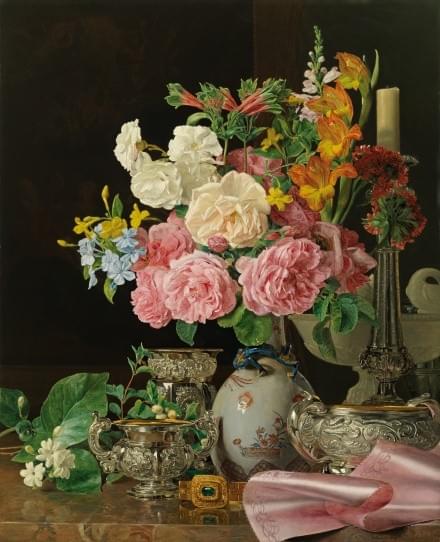
We can't do a better job of introducing this exhibition than the Miyagi Museum of Art already has, so allow us to quote them here:
"The Principality of Liechtenstein is the only country in the world named after the family name of the ruling monarch. . . Liechtenstein boasts one of the most extensive private art collections in the world, and the brilliance of this collection is such that it is sometimes compared to a jewel box.
This exhibition showcases about 126 paintings and porcelain from the Liechtenstein Princely Collections, featuring oil paintings centered on the Northern Renaissance, Baroque and Rococo styles created by artists such as Peter Paul Rubens, Jan Brueghel the Elder, and Lukas Cranach the Elder. Also on display are exquisite porcelain pieces made in the Imperial Porcelain Manufactory in Vienna which have been strongly influenced by the tastes of some of the most prominent aristocrats in Europe. These elegant western paintings and porcelain pieces afford visitors the opportunity to catch a glimpse of the lives of noble courts in the days of yore."
—The Miyagi Museum of Art
Hours: 9:30–17:00 (last entry 16:30)
Closed days: Mondays (Except August 10. The museum will be closed Tuesday August 11 instead.)
Admission: ¥1,500 adults, ¥1,300 college students, ¥750 children ages elementary to high school
Details (English): pref.miyagi.jp/site/museum-en
Location: The Miyagi Museum of Art (宮城県美術館). Map here.
Access: 7-minute walk from International Center Station
22. Higashizawa Genji Firefly Preserve
東沢ゲンジボタル保護地
Mid-July
Yamagata City, Yamagata
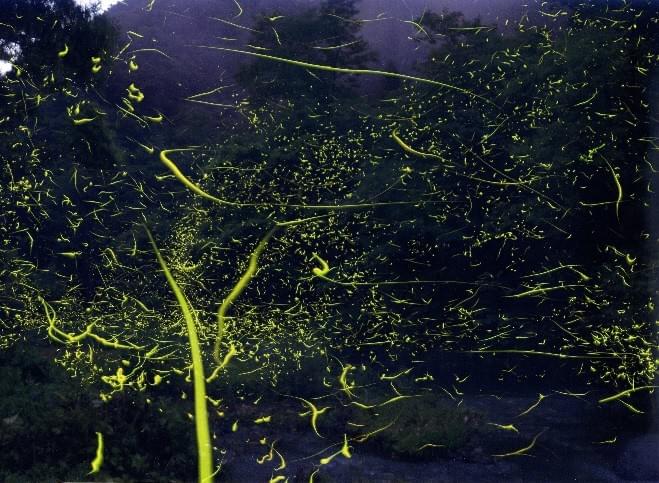
The Higashizawa Genji Firefly Preserve has been named on of Japan's Top 100 Hometown Wildlife Habitats! As the name suggests, the Preserve's claim to fame is its genji fireflies, a species native to Japan.
Hours: Always open, but best firefly viewing is in the evening.
Admission: Free
Location: Higashizawa Genji Firefly Preserve (東沢ゲンジボタル保護地). Map here.
23. Juroku Rakan Matsuri
十六羅漢まつり
July 17–August 16
Yuza, Yamagata
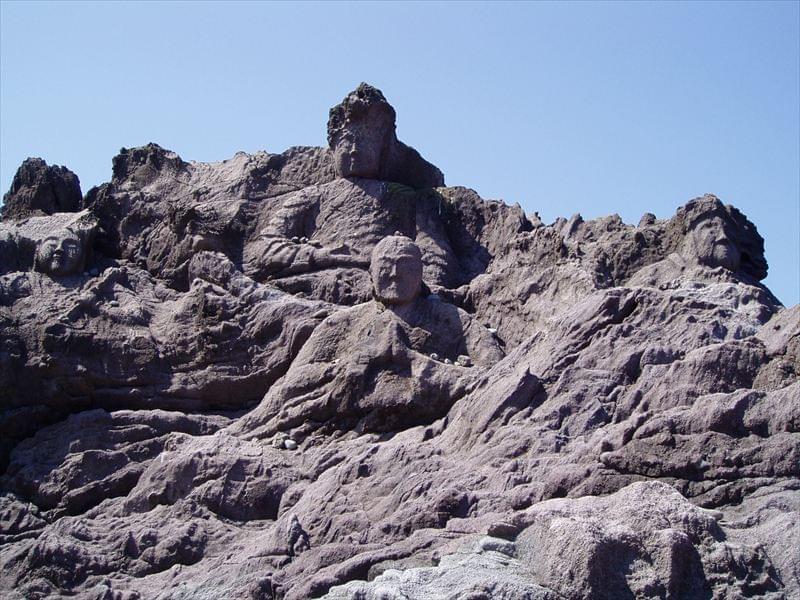
The Juroku Rakan Iwa are a collection of sixteen images of rakan (disciples of Buddha) carved into the rocky shores of northern Yamagata. Gazing at these carvings from the shore, watching them stocially withstand the waves as they have for centuries, is a spiritual and inspiring sight for many. The statues can be viewed freely anytime, but will be illuminated in the evenings during this matsuri, adding a whole other dimension of feels to the scene. The nearby Dewa Futami (出羽二見), a local version of the famous Wedded Rocks down in Futami, Mie, will also be illuminated.
Hours: Always open. Light-up 18:00–21:00
Admission: Free
Event details: yuzachokai.jp
Juroku Rakan Iwa details: yuzachokai.jp
Location: Juroku Rakan Iwa(十六羅漢岩). Map here.
Access: 13-minute walk from Fukura Station
24. A Paintbrush Full of Prayer: Shoko Kanazawa Exhibition
「筆に祈りをこめて」金澤翔子展
July 18–August 16 (shodo performances July 18 & 26)
Iwaki, Fukushima
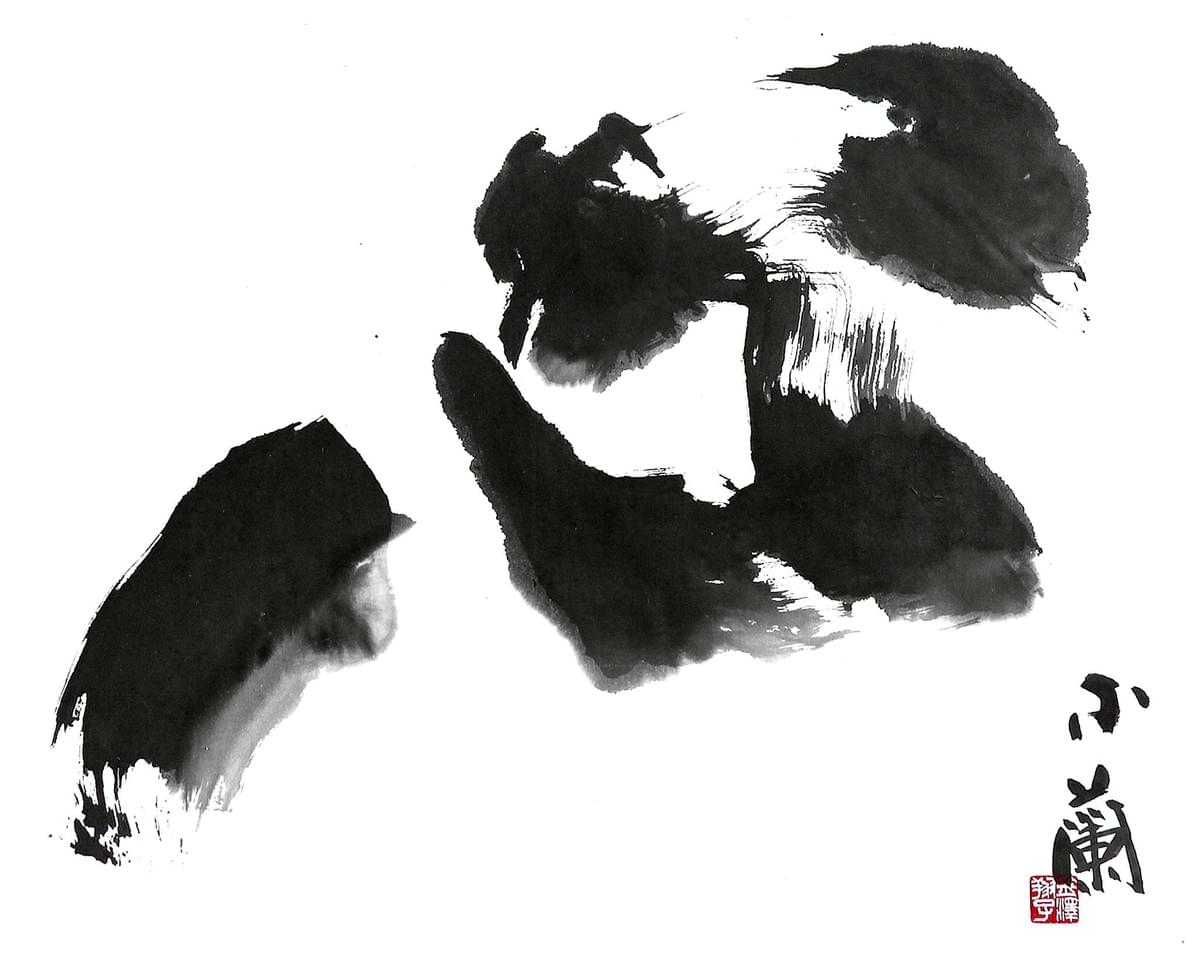
Shoko Kanazawa is an acclaimed Japanese calligrapher based in Fukushima. As someone with Down syndrome herself, she is a passionate disability rights advocate and active in other humanitiarian causes as well. There is a museum dedicated to her Iwaki, her hometown. This exhibition will display some of her rarely seen works, and even offer live shodo performances on select dates.
The museum is also home to an excellent cafe overlooking a traditional Japanese garden, which serves fine Japanese teas like gyokuro and matcha.
Hours: 10:00–16:00 (shodo performances July 18 & 26 14:00~)
Closed days: Wednesdays
Admission: ¥1,000
Event details: kankou-iwaki.or.jp
Official museum HP: kanazawa-shoko.jp
Location: Shoko Kanazawa Art Museum (金澤翔子美術館). Map here.
Access: 25 minutes by bus from Yumoto Station. At the Yumoto Ekimae (湯本駅前) bus stop, board bus bound for Negishiri (根岸) or Tono High School (遠野高校). Alight at Tono Shisho (遠野支) bus stop. Timetable here.
25. Kabutomushi petting zoo at Mushimushi Land
ムシムシランドのカブトムシ自然観察園
July 18–August 23
Tamura, Fukushima
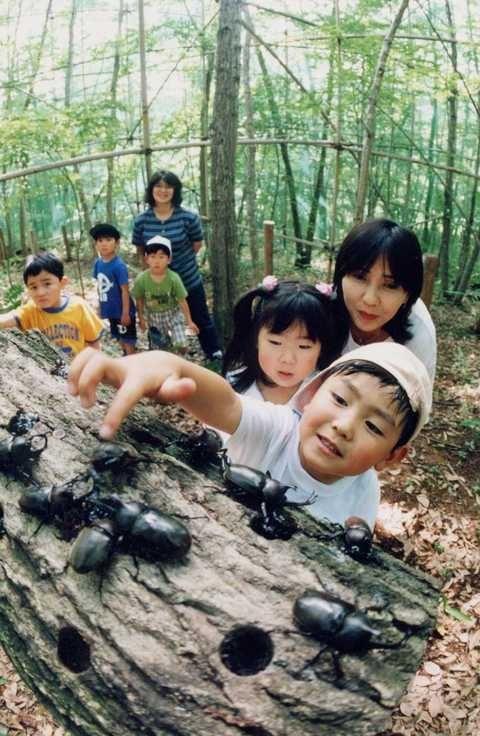
Kabutomushi are the huge, scary-looking-but-harmless beetles that appear in Japanese forests in summer and are kept as short-term pets by Japanese children. Mushimushiland is a bug-themed park located in the woods of Tamura, where kabutomushi thrive in their natural habitat while still being accessible to visitors. The "petting zoo" area is a section of forest enclosed in a giant net where Mushimushiland staff have raised large numbers of kabutomushi. Visitors can enter the enclosure to observe and play with the bugs freely. Although Mushimushiland tends to be marketed towards families with children, it's a great time for anyone who likes bugs, adults included!
Hours: 9:30–16:30
Closed days: Wednesdays (except August 12)
Admission: ¥400 adults, ¥300 children
Details: mushimushiland.com
Location: Mushimushland (ムシムシランド). Map here.
26. Lisa Larson: A Journey Through Time
リサ・ラーソン展 創作と出会いをめぐる旅
July 18–August 30
Iwaki, Fukushima
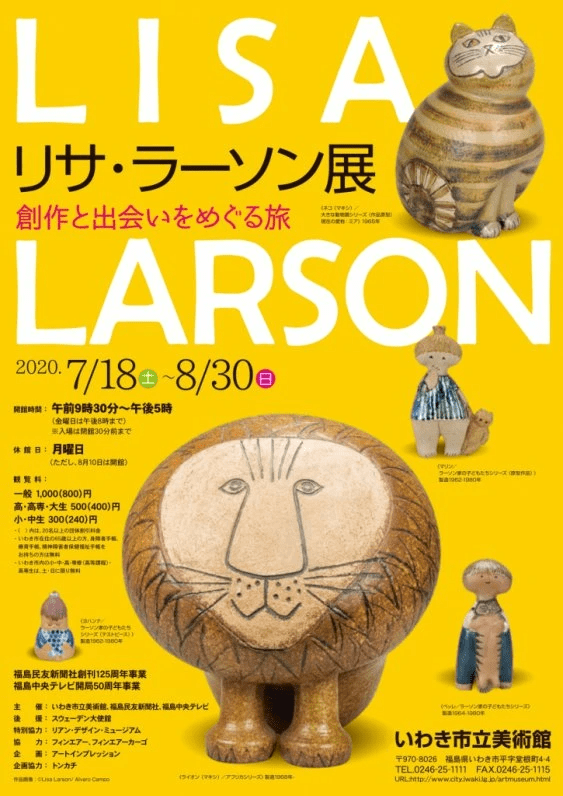
This modest city-run art museum has landed a big-name exhibition! Lisa Larson is an artist best known in Japan for her lion and striped-cat caricatures that appear on merchandise everywhere from Uniqlo to Tokyu Hands. At this exhibition, you can view original works by her and see how her signature aesthetic has evolved over time.
Hours: 9:30–17:00* every day except Friday. On Fridays, the museum is open until 20:00*
*Last entry 30 minutes prior to closing
Closed days: Mondays
Admission: ¥1,000 adults, ¥500 college & high school students, ¥300 children ages elementary to junior high
Location: Iwaki City Art Museum (いわき市立美術館). Map here.
Access: 12-minute walk from Iwaki Station
27. Wara & Seikatsu Exhibition
わらと生活
July 18–November 3
Central Sendai
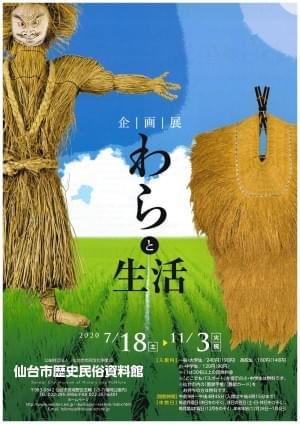
Wara (straw) played a huge role in the daily life of Japanese people right up through the Showa era, with many household items being made out of it, like containers, toys, and even clothing. Nowadays this folk craft has virtually disappeared, replaced with items manufactured from plastic. As climate change becomes of increasing concern in societies around the world, what better time to rediscover this economical and environmentally-friendly way of making daily items? This exhibition teaches visitors about the diverse ways in which straw was used in daily life. On select dates, the museum will also offer workshops where visitors can try their hand at making their own straw craft.
Hours: 9:00–16:45 (last entry 16:15)
Languages: Permanent exhibits have signage in English & Chinese
Closed days: Mondays (except national holidays), the day following a national holiday, the 4th Thursday of every month
Admission: ¥240 adults, ¥180 high school students, ¥120 children ages elementary to junior high
Details: sendai-c.ed.jp
Location: Sendai City Museum of History & Folklore (仙台市歴史民俗資料館). Map here.
Access: 8-minute walk from Tsutsujigaoka Station
28. Spring Valley Zipline Mountain Tour
空飛ぶターザンアトラクション「ジップライン」マウンテンツアー
July 18–November 3
Izumi Ward, Sendai

Spring Valley, best known for its ski resort, offers naturebound thrills during green season too. One such adventure is its zipline course, which boasts seven different zipline runs. The Lite Tour, offered through July 12, covers three of the tamer runs. The Mountain Course, which opens July 18, covers the wilder rides.
Hours (weekends & holidays): Tours start at 10:00, 11:00, 13:00 14:00, & 15:00
Hours (weekdays): Tours start at 10:00, 12:00, & 14:00
Fee: Lite Tour ¥2,500, Mountain Tour ¥3,700
Language: English OK
Reservations: Required, can book online
Details & booking (English): sendai-experience.com
Location: Spring Valley Izumi Kogen (スプリングバレー泉高原). Map here.
Access (weekends & holidays): 50 minutes by bus from Izumi-Chuo Station (泉中央駅). Board city bus 10 bound for Izumi Kogen Spring Valley (泉高原スプリングバレー). Alight at Izumi Kogen Spring Valley, the final stop.
Access (weekdays): 50 minutes by bus from Izumi-Chuo Station (泉中央駅), followed by a 50-minute walk. Board city bus 10 bound for Izumidake Shizen Fureaikan (泉岳自然ふれあい館) at Izumi-Chuo Station. Alight at Izumidake Shizen Fureaikan, the final stop.
29. Izunuma Lotus Festival
伊豆沼ハスまつり
July 20–August 31
Tome, Miyagi
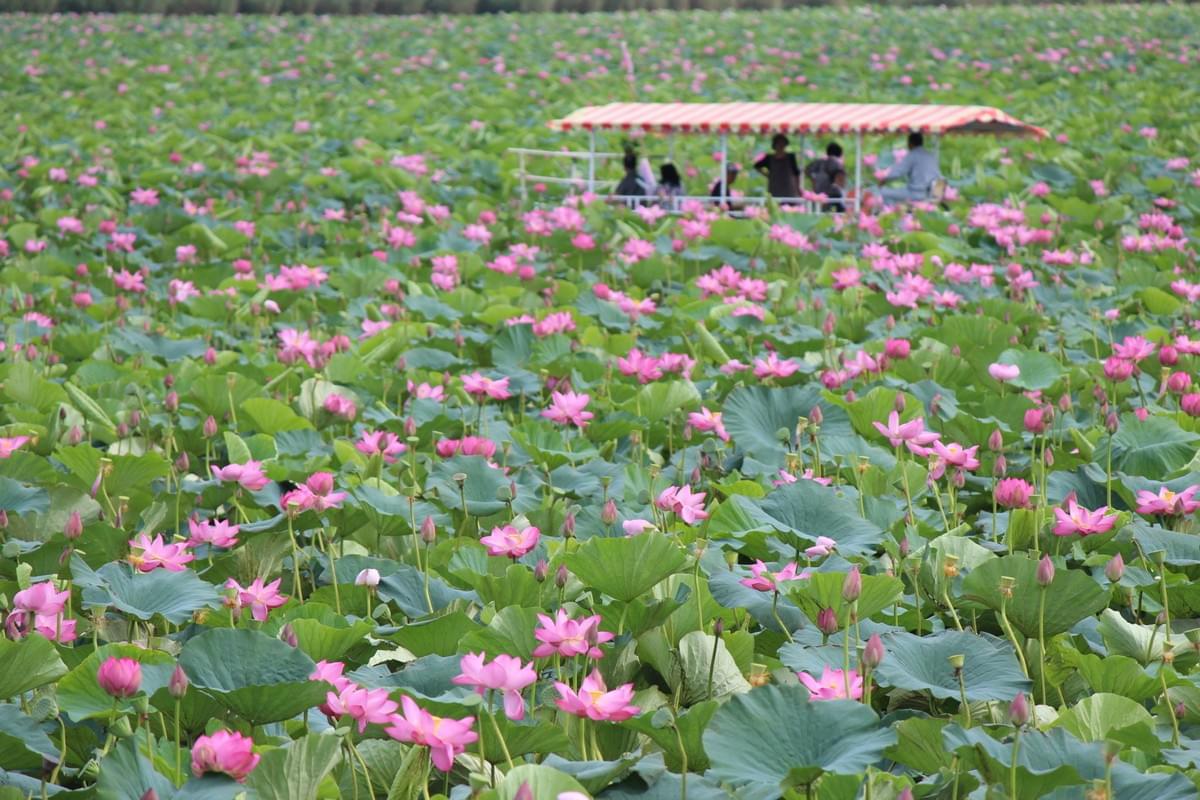
Take a romantic boat ride through thousands of pink flowers during the famous Lotus Festival at lakes Izunuma and Uchinuma, a popular summer destination for flower lovers. Operated by local fishermen, the rides take about thirty minutes and offer a perfect opportunity to take in the spectacular sight of lotuses floating on the lake. The Naganuma Kaijo events have been suspended this year, but the Izunuma and Uchinuma events are still on.
Hours: Lakes are always open. Boat rides available 8:00–16:00
Admission: Lakes are free. Boat rides ¥700 adults,¥400 children
Details (English): visitmiyagi.com
Details (Japanese): kurihara-kb.net
Location: Lake Izunuma (伊豆沼). Map here.
Access: 5-minute walk from Nitta Station. For boat rides, head to one of the three "kaijo" (会場) docks (see map here).
30. Character shows at Chacha World
大変お待たせしました!7月の4連休にキャラクターショー
July 23–26
Tome, Miyagi
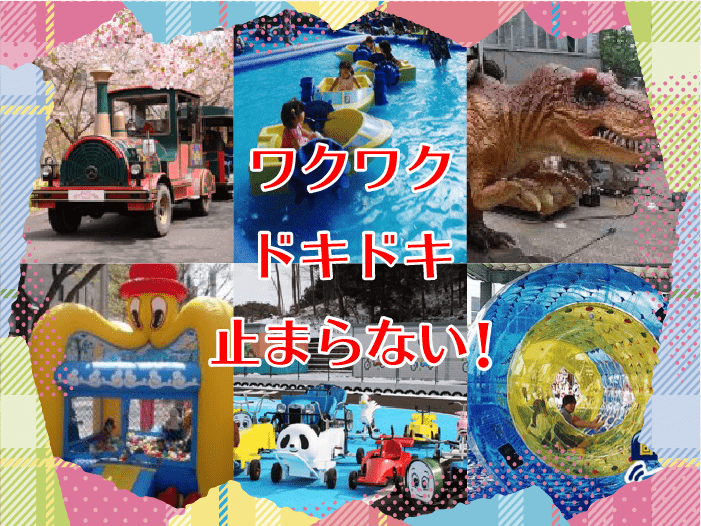
Celebrate the holiday weekend with appearances by beloved anime characters from shows like Kamen Rider and Pretty Cure. These character shows take place a Chacha World, an old-fashioned amusement park geared towards children but open to anyone. Attractions include a bounce house, bouncy slides, a "Magic House" and tons of fun norimono (vehicles)!
Times: Character performances at 11:00 & 14:00 each day
Admission: Free entry. Attractions are charged separately.
Details: chachaworld.jp
Location: Chacha World Ishikoshi (チャチャワールドいしこし). Map here.
Access: 26-minute walk from Ishikoshi Station
31. Michinoku Fireworks Festival
みちのく煙火まつり「三河蒲郡手筒花火の宴」
July 25
Kawasaki, Miyagi
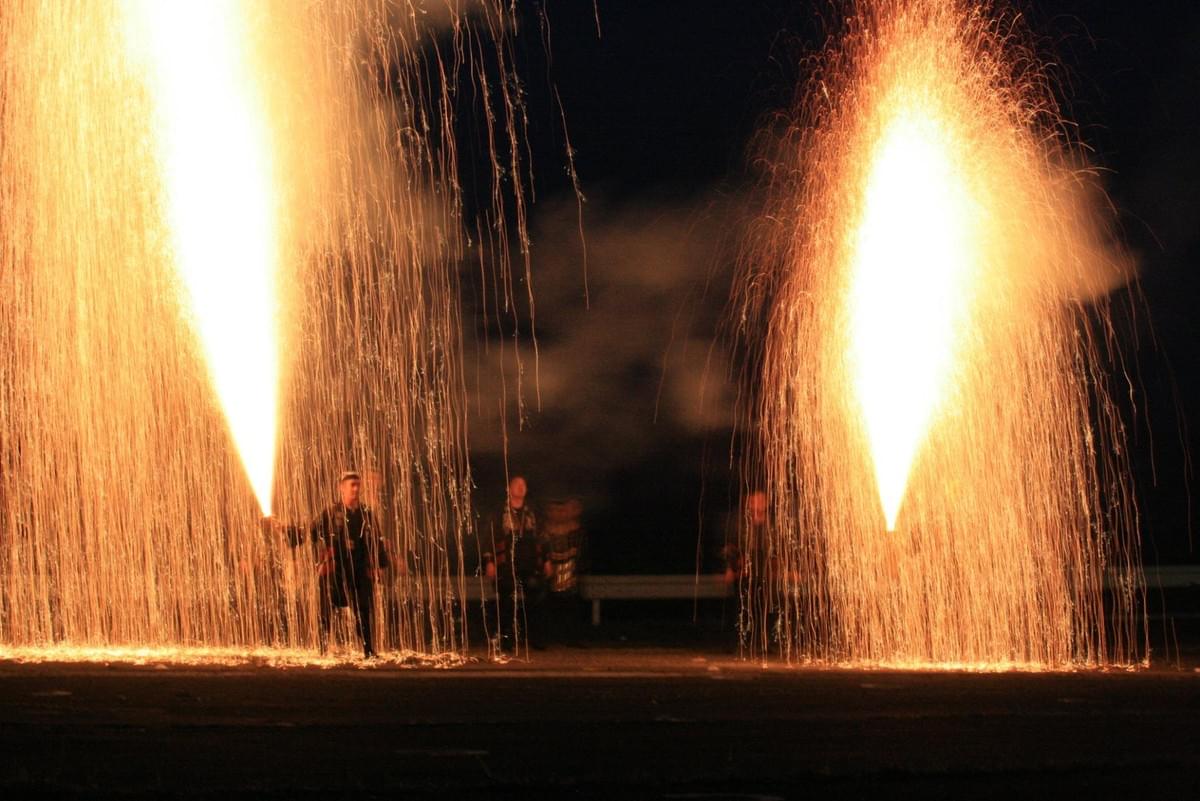
UPDATE (7/20): Due to concern over coronavirus, this event has been cancelled for 2020.*
This is no ordinary fireworks show! Not only is it one of the very few that hasn't been cancelled this year due to coronavirus fears, it's also unique in that the fireworks here are handheld tedzutsuhanabi (手筒花火). Tedzutsuhanabi fireworks originated down in the Higashimikawa area of Aichi Prefecture, where they remain popular among blue-collar communities. Outside of Higashimikawa, they're pretty rare—Kawasaki is the only place we know of that does them in Tohoku.
Hours: 15:00–21:00 (fireworks 19:30–20:30)
Admission: Free
Details: miyagi-kankou.or.jp
Location: Boat Pier Kawasaki (ボートピア川崎). Map here.

